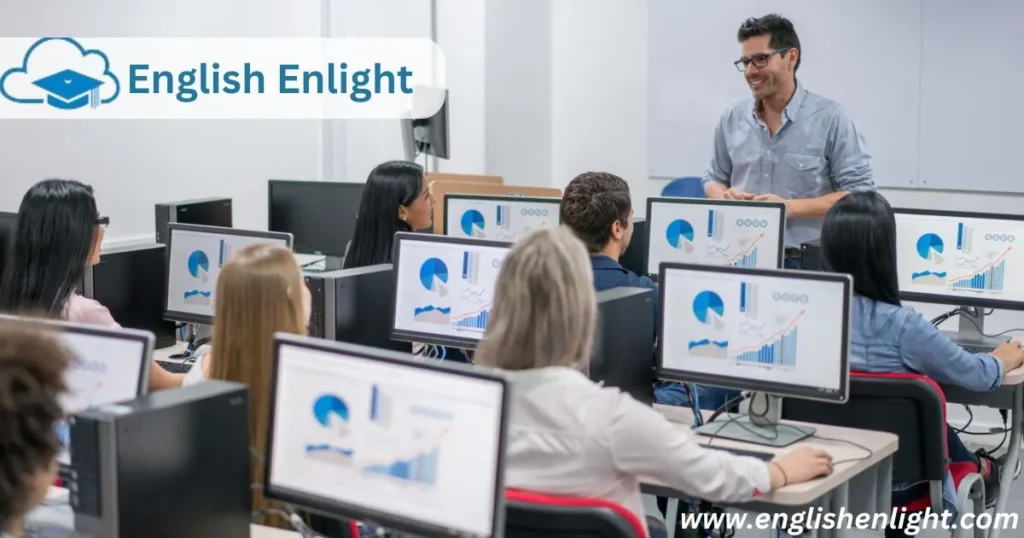The phrase “not only” is commonly used in English to introduce two related facts, actions, or ideas that are both important. Often, it’s followed by “but also”, creating a structure that emphasizes two aspects of a situation. However, overusing this phrase can make your writing or speech sound repetitive. Thankfully, there are various alternatives to express the same idea with more nuance, variety, and sophistication.
In this article, we’ll explore 25 alternative ways to say “not only” and provide clear explanations and examples for each. These examples will be helpful in professional settings, such as writing emails or letters, and we will include key phrases, such as “Give me a few days to learn more” and a section on pros and cons. Let’s dive in.
1. In Addition To
The phrase “in addition to” can be used to emphasize that something extra or important follows the initial idea. This is a simple and direct alternative to “not only.”
Scenario Example:
Subject: Upcoming Project Proposal
Dear Daniel Brown,
I hope this email finds you well.
I wanted to inform you about the new project we’ve been discussing. In addition to our existing responsibilities, we will be focusing on improving team collaboration through enhanced communication tools. This will help streamline our processes and eliminate redundant tasks.
Please give me a few days to learn more about the integration plan before we finalize the next steps.
Best regards,
Jons
2. As Well As
“As well as” introduces additional information and is a smoother, less formal alternative to “not only.”
Scenario Example:
Subject: Event Planning Confirmation
Dear Daniel,
I’m writing to confirm the details of the upcoming company retreat. As well as organizing the transportation, I’ve also arranged accommodation and meals for all attendees. I believe this will ensure a smooth and enjoyable experience for everyone involved.
Should you have any questions, feel free to reach out.
Best regards,
Jons
3. Both… And
The “both… and” structure is a natural way to indicate two important elements.
Scenario Example:
Subject: Presentation Update
Dear Daniel,
I wanted to update you on the presentation for next week. Both the design team and the marketing team have contributed excellent ideas that we will incorporate. This collaborative effort should lead to a well-rounded and engaging presentation.
If you have any suggestions, please feel free to share them.
Best,
Jons
4. Moreover
“Moreover” is a formal transition word that indicates additional information is coming, similar to “not only” but in a more professional tone.
Scenario Example:
Subject: Quarterly Sales Report
Dear Mr. Brown,
I’m pleased to inform you that our sales performance this quarter has exceeded expectations. Moreover, the customer satisfaction scores have improved significantly, reflecting our commitment to service quality.
I will send you the full report by the end of the week. Give me a few days to learn more about the next quarter’s strategy as well.
Sincerely,
Jons
5. Along with
“Along with” introduces extra information that complements the first part of the sentence.
Scenario Example:
Subject: New Training Program

Dear Daniel,
We’re excited to announce the launch of our new training program next month. Along with focusing on technical skills, the program will emphasize leadership development and team-building exercises, ensuring a comprehensive growth experience.
I look forward to discussing this further in our next meeting.
Best,
Jons
6. Plus
“Plus” is a casual and concise alternative that works well in informal communication.
Scenario Example:
Subject: Office Improvements
Dear Daniel,
We’ve made several improvements to the office space, including new seating arrangements. Plus, we’ve upgraded the Wi-Fi network to ensure faster connections and reduced downtime.
Please let me know if there’s anything else you’d like to suggest.
Kind regards,
Jons
7. Not Just… But Also
This is a more dynamic alternative to “not only” and tends to emphasize both parts equally.
Scenario Example:
Subject: Marketing Strategy Review
Dear Daniel,
Not just our website traffic, but also our social media engagement has increased significantly over the last month. This is a clear sign that our marketing efforts are paying off on multiple fronts.
Let me know when you are available to review these results in detail.
Best regards,
Jons
8. Equally Important
When both ideas have the same level of importance, “equally important” works well to convey that balance.
Scenario Example:
Subject: Budget Proposal
Dear Daniel,
I’ve revised the budget for the upcoming project. While reducing costs is essential, equally important is maintaining the quality of our services. We’ll need to strike the right balance moving forward.
Give me a few days to learn more about the potential cost-saving options before we finalize the budget.
Best,
Jons
9. Besides That
“Besides that” works well when you want to add an additional point that enhances the main idea.
Scenario Example:
Subject: Conference Agenda
Dear Daniel,
We’ve confirmed the guest speakers for the conference. Besides that, we’ve also arranged networking sessions and workshops that I believe will greatly benefit the attendees.
Looking forward to your feedback.
Best regards,
Jons
10. Additionally
“Additionally” is a professional, concise way to introduce an extra piece of relevant information.
Scenario Example:
Subject: Client Meeting Recap
Dear Daniel,
Thank you for attending yesterday’s meeting. The client is pleased with our proposal. Additionally, they’ve expressed interest in extending our services to cover more regions, which could present new opportunities for growth.
I’ll keep you posted on further developments.
Best,
Jons
11. Furthermore
A formal alternative, “furthermore” adds emphasis to the extra point, showing its relevance and weight.
Scenario Example:
Subject: Departmental Review
Dear Daniel,
Our department has shown remarkable improvements in the last quarter. Furthermore, we’ve implemented new processes that have increased overall productivity by 15%.
Please review the attached report when convenient.
Best,
Jons
12. At the Same Time
The phrase “at the same time” highlights two simultaneous actions or facts.
Scenario Example:
Subject: Project Timeline Update
Dear Daniel,
I’ve adjusted the project timeline to meet the new deadline. At the same time, I’ve coordinated with the team to ensure we maintain the quality of our deliverables.
Please let me know if this timeline works for you.
Best,
Jons
13. In the Same Way
When comparing two ideas that complement each other, “in the same way” is a useful phrase.
Scenario Example:
Subject: Cross-Department Collaboration
Dear Daniel,
Our sales department has successfully implemented a new client tracking system. In the same way, our marketing team has adopted advanced analytics tools to better target our audience, resulting in higher conversion rates.
Looking forward to discussing these developments in more detail.
Best regards,
Jons
14. Together with
“Together with” implies that two elements are being combined for a more significant effect.
Scenario Example:
Subject: Product Launch Strategy
Dear Daniel,
We’ve finalized the product features. Together with the marketing plan, we’re confident that this launch will attract a strong customer base and establish our brand in the market.
I’ll provide you with a detailed report by the end of the week.
Best,
Jons
15. On Top of That
For a more casual tone, “on top of that” adds emphasis when introducing additional information.
Scenario Example:
Subject: Employee Feedback
Dear Daniel,
The team is very happy with the new benefits package. On top of that, the new office layout has been a big hit, and people are reporting increased productivity.
Let me know if you’d like to discuss these changes further.
Best,
Jons
16. Likewise
“Likewise” can be used to indicate that one action or fact mirrors another, similar to “not only.”
Scenario Example:
Subject: Client Satisfaction Report
Dear Daniel,
Our primary client has seen positive outcomes from our last collaboration. Likewise, their feedback on our current project is overwhelmingly positive, which bodes well for future engagements.
Looking forward to your thoughts.
Best regards,
Jons
17. On the Other Hand
When you want to present two contrasting ideas but still relate them, “on the other hand” works well.
Scenario Example:
Subject: Workload Distribution
Dear Daniel,
The team has managed the current workload efficiently. On the other hand, there are concerns about potential burnout if we don’t allocate more resources soon.
Let me know your thoughts on this.
Best regards,
Jons
18. Including
“Including” signals that more details are being added to the initial idea, often followed by specific examples.
Scenario Example:
Subject: Team Contributions
Dear Daniel,
The project is progressing smoothly, including some excellent contributions from the junior team members. Their fresh perspectives have helped us refine the project strategy.
I look forward to your input during
our next meeting.
Best regards,
Jons
19. Plus the Fact That
“Plus the fact that” is an informal way to add more information that strengthens your argument or point of view.
Scenario Example:
Subject: Marketing Campaign Overview
Dear Daniel,
The new marketing campaign has shown great results so far. Plus the fact that we’ve secured several key influencers to promote our brand, which should increase our online visibility even more.
Let me know if you’d like to discuss this further during the next strategy meeting.
Best regards,
Jons
20. In Conjunction With
“In conjunction with” is a more formal phrase, typically used to highlight two things that are working or occurring together.
Scenario Example:
Subject: New Policy Implementation
Dear Daniel,
I wanted to update you on the implementation of the new policies. In conjunction with our existing guidelines, these new measures will improve workplace efficiency and employee satisfaction.
Give me a few days to learn more about their full impact before we finalize the report.
Best regards,
Jons
21. In Tandem With
“In tandem with” suggests that two actions or facts are working side by side, enhancing each other’s impact.
Scenario Example:
Subject: New Software Integration
Dear Daniel,
The new software we’ve implemented is performing well. In tandem with the training sessions provided to the staff, we’re seeing a noticeable improvement in both productivity and morale.
Looking forward to discussing these improvements in detail soon.
Best regards,
Jons
22. What’s More
“What’s more” is a conversational, casual alternative that adds extra emphasis on an additional point.
Scenario Example:
Subject: Customer Survey Results
Dear Daniel,
The latest customer survey results show a high satisfaction rate for our services. What’s more, many respondents indicated that they would be willing to recommend us to others, which could significantly boost our referral business.
I’ll compile a full report and send it over soon.
Best regards,
Jons
23. Besides
“Besides” is a concise way to add information, especially in a more casual tone. It functions similarly to “not only” when providing additional supporting points.
Scenario Example:
Subject: Quarterly Financial Review
Dear Daniel,
Our profits have increased by 10% this quarter. Besides, we’ve successfully reduced operational costs, which puts us in an even stronger financial position moving forward.
Let me know if you have any questions about the report.
Best regards,
Jons
24. Additionally
“Additionally” is another formal alternative, often used in business contexts to introduce supplementary points.
Scenario Example:
Subject: New Partnership Opportunity

Dear Daniel,
I’m pleased to inform you that our negotiations with the potential new partner have been going well. Additionally, they’ve expressed interest in expanding the collaboration to include other markets, which could open up significant growth opportunities for us.
I’ll keep you updated on any further developments.
Best regards,
Jons
25. Pros and Cons
Finally, let’s discuss the pros and cons of using alternatives to “not only.”
Pros:
- Variety: Using different phrases can make your communication more dynamic and engaging.
- Tone Adjustments: Certain alternatives, like “plus” or “besides”, are more casual, while options like “furthermore” or “in conjunction with” add a formal tone, helping you match the right tone for your audience.
- Clarity: Some alternatives may improve clarity, especially in professional writing, by avoiding overcomplicated structures.
Cons:
- Overuse: Just like “not only,” any of these alternatives can become repetitive if used too often.
- Context-Dependent: Certain alternatives may not fit every context. For example, using “plus” in a formal document may feel out of place.
FAQs About “Not Only”
1. What are some formal alternatives to “not only” in business communication?
In formal business settings, you can use phrases like “in addition to”, “furthermore”, “moreover”, “as well as”, and “in conjunction with”. These alternatives maintain a professional tone while effectively adding extra information or emphasis.
2. How do I know which alternative to use in my writing?
The choice depends on the tone and formality of your writing. If you’re aiming for a professional tone, use formal options like “furthermore” or “in addition to.” For casual conversations or internal emails, you can opt for less formal phrases like “plus” or “besides.”
3. Can I use more than one alternative to “not only” in the same sentence?
Yes, but be cautious of overcomplicating the sentence. For example, you could say, “In addition to the new training program, we are also improving our technology systems.” However, using too many alternatives together might make the sentence harder to follow.
4. Are there any common mistakes to avoid when replacing “not only”?
One common mistake is using a casual alternative like “plus” in a highly formal context. Another is misusing structure. For example, some alternatives need balance or proper parallelism in the sentence to ensure grammatical correctness, like in “both X and Y.”
5. Why is it important to vary my phrases instead of just using “not only” repeatedly?
Varying your language keeps your writing fresh and engaging. It also helps to avoid repetition, which can make your writing sound redundant or unprofessional, particularly in formal documents or lengthy emails. Using alternatives also allows you to fine-tune the tone and clarity of your message.
Conclusion
Using different ways to say “not only” can enhance your writing by providing variety and flexibility in both formal and informal contexts. From professional emails to casual conversations, these alternatives will help you articulate multiple points without sounding repetitive.
Whether you use “in addition to”, “as well as”, or any of the other options, each has its place and function. Remember to choose the right one based on the formality of the situation and the message you want to convey.















